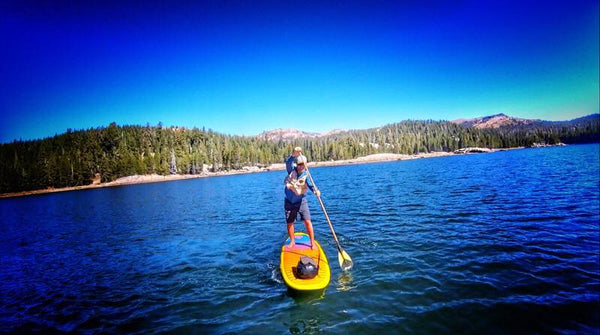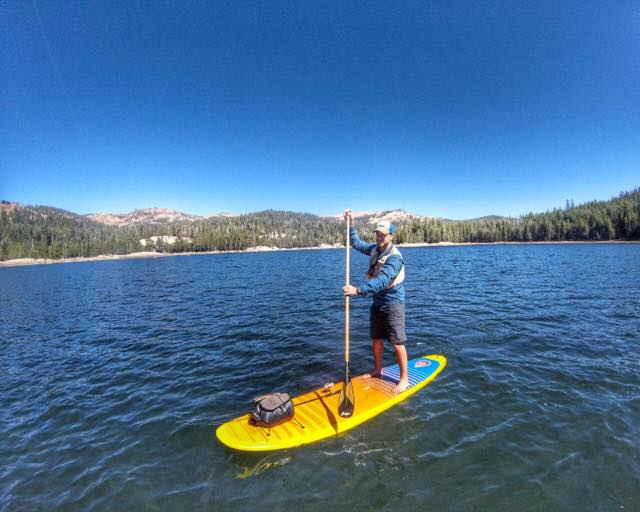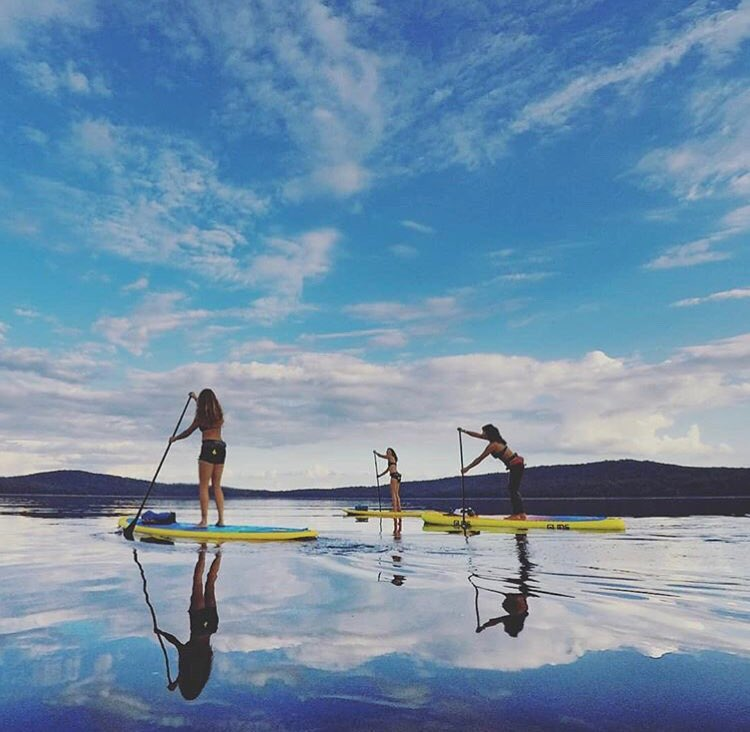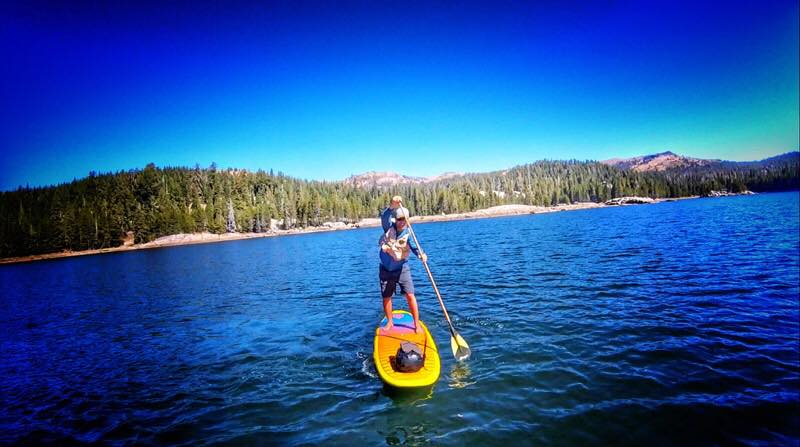
How to Master 'The Catch' on Your Stand up Paddle Board Stroke
Learn a clean, powerful SUP catch—vertical shaft, full blade burial, torso-driven power, and early exit. Drills, fixes, and board/condition tips make faster, easier paddling possible on any board.
The catch is the foundation of an efficient SUP stroke: a quiet, fully buried blade set with a vertical shaft before you apply power.
This guide shows how to plant, set, and drive from the torso, then exit at your feet to reduce yaw and fatigue.
You’ll learn posture and paddle cues, board-specific nuances (touring vs all-around, iSUP PSI), and adjustments for wind, chop, and downwind.
Short drills— catch-and-freeze, silent tens, wall drill, metronome plant—make progress fast, while strength and mobility support clean mechanics.
Maintain your gear, practice consistently, and your speed, control, and endurance will all climb.
Table of contents
A powerful, efficient stand up paddle board stroke starts before you ever pull. It starts at the catch—the instant your blade meets the water and anchors. Nail this moment and you’ll paddle straighter, faster, and longer with less fatigue. Miss it, and you’ll splash, skid, and work twice as hard for half the speed. This guide breaks down what the catch is, why it matters, exactly how to do it, and how to practice until it becomes second nature—on any board, in any conditions.

What is “The Stand up Paddle Board Catch” (and why it matters)?
The catch is the blade’s first contact + full submersion at the start of each stroke. The goal is a clean, quiet plant that loads the blade against solid water before you apply power. A great catch:
-
Maximizes forward drive (less side slip/yaw)
-
Reduces splash and wasted energy
-
Protects shoulders and low back by letting torso rotation (not arms) do the work
-
Sets up a short, early-exit power phase that keeps the board stable and fast
Think of the blade as a pole vault pole—plant first, then move your body past it.
Foundations: posture, stance, and paddle basics
-
Stance: Feet hip- to shoulder-width, straddling the carry handle. Knees soft, hips stacked over heels. Eyes on the horizon.
-
Blade orientation: The angled/scooped face points away from you at the catch (that’s the power face).
-
Shaft angle: Early in the stroke, keep the shaft vertical over the rail to aim force straight forward.
-
Paddle length (baseline): ~6–8 inches (15–20 cm) over height. Go a touch shorter for thick iSUPs, racing cadence, or surf.
The catch—step by step (micro-cues that matter)
-
Setup the reach
-
Stack shoulders: top hand roughly over the blade; bottom hand relaxed.
-
Reach forward comfortably from the torso, not by rounding the back. Think “long torso, short arms.”
-
-
Plant (quietly)
-
Bury the blade fully at or just ahead of your toes—no half dips.
-
Aim for a silent entry (minimal splash). If you hear slurps, slow down the place-in.
-
-
Lock and load
-
Allow a micro-moment for the blade to “set” in the water (it should feel solid).
-
Keep the shaft vertical; elbows soft; wrists neutral.
-
-
Only now, add power
-
Drive from torso rotation and hips, not just the arms.
-
Keep the blade close to the rail; avoid yanking outward.
-
-
Exit at your feet
-
A great catch sets up a short power phase. Exit around your feet to avoid yaw and back strain.
-
Memory cue: “Plant. Set. Drive. Exit.”
Drills that make the catch click (10–15 minutes)
-
Catch-and-freeze: On flatwater, plant the blade fully and freeze for a half-second before pulling. Feel the anchor. 8–10 reps/side.
-
Silent tens: Do 10 strokes striving for zero entry splash. Rest, repeat x4.
-
Wall drill (on land): Stand next to a wall; rehearse the reach with the shaft nearly brushing the wall—teaches vertical shaft and shoulder stack.
-
Metronome plant: Use a metronome app. On each beep: plant (no pull). Next beep: plant + short pull. Builds timing and patience at the catch.
-
Video check: Record 10 strokes from the side. Look for full burial before power and a vertical shaft at entry.
Common mistakes—and quick fixes
-
Half-buried blade at entry → Slow the plant; bury fully before you pull.
-
Early pull with arms → Add a half-second “set,” then rotate from the torso.
-
Angled shaft (diagonal) → Stack shoulders; top hand over the blade for a more vertical shaft.
-
Pulling past the heels → Exit at the feet; think short, clean power phase.
-
Splashy entry → Enter edge-first, then finish submersion; reduce speed on the place-in.
-
Death-grip on the shaft → Relax hands; power comes from the body, not a clenched grip.
-
Looking down → Eyes up; balance and line improve immediately.

How board type changes the feel of the catch
-
Touring / displacement hulls: Reward clean, early catches and short power phases. You’ll feel glide amplify with neat entries.
-
All-around / planing boards: More forgiving but require more frequent side switches. Clean catches help hold line between switches.
-
Inflatables (iSUP): Ride higher; a slightly shorter paddle can keep your shaft vertical at entry. PSI matters—under-inflation makes the catch feel mushy.
-
Long & narrow vs short & wide: Narrow boards magnify errors (great feedback); wider boards forgive, but don’t let that hide sloppy plants.
Conditions: keeping the catch clean in real water
-
Headwind/chop: Shorten the reach slightly; keep cadence up. Plant decisively to punch through ripples.
-
Downwind/bump: Time the catch on the backside of small waves; exit early as you accelerate.
-
Cross-wind: Use a light offset stance (front foot slightly forward). Keep the shaft vertical and plant before making foot adjustments.
Strength and mobility that help the catch
-
Anti-rotation core: Pallof press, dead bug variations—resist twist to control the shaft line.
-
Hip hinge + posterior chain: RDLs/hip thrusts—support torso-driven power.
-
Thoracic mobility: Open-book rotations; improves shoulder stack and vertical shaft.
-
Grip endurance (light): Farmer carries with relaxed hands; train endurance without a crush grip.
Maintenance that protects your technique
-
Inflation: Hit recommended PSI on iSUPs (often 15–20). A soft board = spongy catch.
-
Blade edge: Check for nicks; a clean edge enters quieter.
-
Fin tightness/placement: A secure fin stabilizes line as you learn clean entries (touring fin slightly aft for tracking).
Two-week plan to hardwire the catch
Week 1
-
Session A: Wall drill 5 min → catch-and-freeze 5× per side → silent tens 3×.
-
Session B: Metronome plant (10 min) → video 10 strokes each side.
-
Session C: Easy paddle focusing on quiet entries + exit at feet (20–30 min).
Week 2
-
Session A: Silent tens 5× → cadence set (2 min comfortable / 1 min +5 SPM × 4) while keeping catch clean.
-
Session B: Video review + corrections → repeat catch-and-freeze 6× per side.
-
Session C: Light chop session—maintain clean plant with offset stance and vertical shaft.
Stick to this and your stroke will feel smoother within days—and your GPS pace gets steadier as form replaces force.

Final Thoughts
Mastering the stand up paddle board catch isn’t about pulling harder—it’s about planting smarter. Bury the blade early, keep the shaft vertical, let your torso do the work, and exit at your feet. Small, repeatable cues win every time. Film a few strokes weekly, keep drills short and focused, and revisit paddle length once your technique settles in. When the catch is clean, everything downstream—power, balance, speed—gets easier.
FAQs
Where exactly should the blade enter for the catch?
At or just ahead of your toes, close to the rail, with the blade fully buried before you pull.
How do I keep the shaft vertical at entry?
Stack your shoulders (top hand over the blade) and stand tall. Practice the wall drill to groove it.
Should I reach as far as possible?
Reach comfortably from the torso. Overreaching rounds your back and ruins the plant.
Why is my catch loud and splashy?
You’re rushing or entering flat. Edge-first, then bury, and slow the place-in for a quiet plant.
My board yaws even with a clean catch—why?
You’re likely exiting late. Finish the power phase at your feet and keep the blade close to the rail.
Does paddle length affect the catch?
Yes. Too long = diagonal shaft and late exits; too short = shallow plants. Start 6–8 inches over height, tweak from there.
How do iSUPs change the catch?
They sit higher; many paddlers prefer slightly shorter paddles to keep shafts vertical. Ensure proper PSI for a solid feel.
What’s one drill I should do every session?
Silent tens. Ten quiet entries per side, rest, repeat. It forces patience and precision at the plant.





